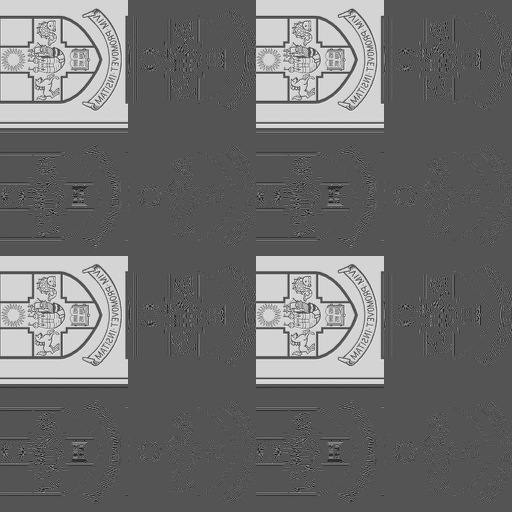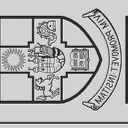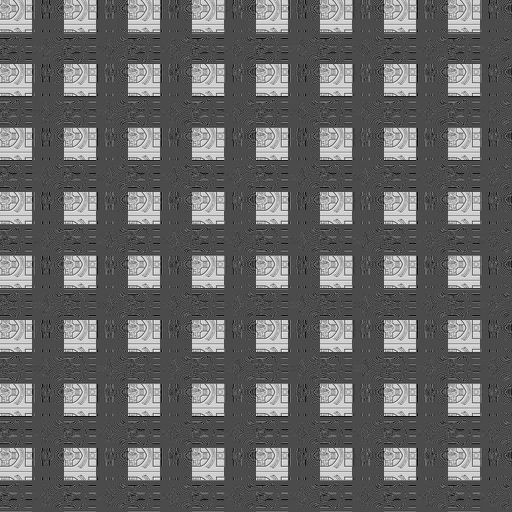WaveThresh
Help
wst2D
(Packet-ordered) 2D non-decimated wavelet transform.
DESCRIPTION
This function computes the (packet-ordered) 2D non-decimated
wavelet transform.
USAGE
wst2D(m, filter.number=10, family="DaubLeAsymm")
REQUIRED ARGUMENTS
-
m
- A matrix containing the image data that you wish to decompose. Each
dimension of the matrix must be the same power of 2.
OPTIONAL ARGUMENTS
- filter.number
- This selects the smoothness of wavelet that you
want to use in the decomposition. By default this is 10,
the Daubechies least-asymmetric orthonormal compactly supported wavelet
with 10 vanishing moments.
- family
- specifies the family of wavelets that you want to use.
Two popular options are "DaubExPhase" and "DaubLeAsymm" but see the
help for filter.select for more possibilities.
VALUE
An object of class wst2D.
SIDE EFFECTS
None
DETAILS
The wst2D computes the (packet-ordered) 2D non-decimated
discrete wavelet transform. Such a transform may be used in wavelet
shrinkage of images using the AvBasis.wst2D
function to perform an "average-basis" inverse. Such a transform was
used to denoise images in the paper by
Lang, Guo, Odegard, Burrus and Wells, 1995.
The algorithm works by mixing the HH, GH, HG and GG image operators of
the 2D (decimated) discrete wavelet transform (see
Mallat, 1989 and the implementation
in WaveThresh called imwd) with the shift operator
S (as documented in Nason and Silverman, 1995)
to form new operators (as given in the help to
getpacket.wst2D).
Subimages can be obtained and replaced using the
getpacket.wst2D and
putpacket.wst2D functions.
This function is a 2D analogue of the (packet-ordered) non-decimated
discrete wavelet transform implemented in WaveThresh as
wst.
RELEASE
Version 3.9.5 Copyright Guy Nason 1998
SEE ALSO
AvBasis.wst2D,
getpacket.wst2D,
imwd,
plot.wst2D,
print.wst2D,
putpacket.wst2D,
summary.wst2D,
wst2D object.
EXAMPLES
#
# We shall use the ua image of
# the University coat of arms.
#
image(ua)
 #
# Now let's apply the (packet-ordered) 2D non-decimated DWT to it...
# (using the default wavelets)
#
uawst2D <- wst2D(ua)
#
# One can use the function plot.wst2D to get
# a picture of all the resolution levels. However, let's just look at them
# one at a time.
#
# How many levels does our uawst2D object have?
#
nlevels(uawst2D)
#[1] 8
#
# O.k. Let's look at resolution level 7
#
image(uawst2D$wst2D[8,,])
#
# Now let's apply the (packet-ordered) 2D non-decimated DWT to it...
# (using the default wavelets)
#
uawst2D <- wst2D(ua)
#
# One can use the function plot.wst2D to get
# a picture of all the resolution levels. However, let's just look at them
# one at a time.
#
# How many levels does our uawst2D object have?
#
nlevels(uawst2D)
#[1] 8
#
# O.k. Let's look at resolution level 7
#
image(uawst2D$wst2D[8,,])
 #
# There are four main blocks here (each of 256x256 pixels) which themselves
# contain four sub-blocks. The primary blocks correspond to the no shift,
# horizontal shift, vertical shift and "horizontal and vertical" shifts
# generated by the shift S operator. Within each of the 256x256 blocks
# we have the "usual" Mallat smooth, horizontal, vertical and diagonal
# detail, with the smooth in the top left of each block.
#
# Let's extract the smooth, with no shifts at level 7 and display it
#
image(getpacket(uawst2D, level=7, index=0, type="S"))
#
# There are four main blocks here (each of 256x256 pixels) which themselves
# contain four sub-blocks. The primary blocks correspond to the no shift,
# horizontal shift, vertical shift and "horizontal and vertical" shifts
# generated by the shift S operator. Within each of the 256x256 blocks
# we have the "usual" Mallat smooth, horizontal, vertical and diagonal
# detail, with the smooth in the top left of each block.
#
# Let's extract the smooth, with no shifts at level 7 and display it
#
image(getpacket(uawst2D, level=7, index=0, type="S"))
 #
# Now if we go two more resolution levels deeper we have now 64x64 blocks
# which contain 32x32 subblocks corresponding to the smooth, horizontal,
# vertical and diagonal detail.
#
immagic(uawst2D$wst2D[6,,])
#
# Now if we go two more resolution levels deeper we have now 64x64 blocks
# which contain 32x32 subblocks corresponding to the smooth, horizontal,
# vertical and diagonal detail.
#
immagic(uawst2D$wst2D[6,,])
 #
# Groovy eh?
#
# Groovy eh?
 #
# Now let's apply the (packet-ordered) 2D non-decimated DWT to it...
# (using the default wavelets)
#
uawst2D <- wst2D(ua)
#
# One can use the function plot.wst2D to get
# a picture of all the resolution levels. However, let's just look at them
# one at a time.
#
# How many levels does our uawst2D object have?
#
nlevels(uawst2D)
#[1] 8
#
# O.k. Let's look at resolution level 7
#
image(uawst2D$wst2D[8,,])
#
# Now let's apply the (packet-ordered) 2D non-decimated DWT to it...
# (using the default wavelets)
#
uawst2D <- wst2D(ua)
#
# One can use the function plot.wst2D to get
# a picture of all the resolution levels. However, let's just look at them
# one at a time.
#
# How many levels does our uawst2D object have?
#
nlevels(uawst2D)
#[1] 8
#
# O.k. Let's look at resolution level 7
#
image(uawst2D$wst2D[8,,])
 #
# There are four main blocks here (each of 256x256 pixels) which themselves
# contain four sub-blocks. The primary blocks correspond to the no shift,
# horizontal shift, vertical shift and "horizontal and vertical" shifts
# generated by the shift S operator. Within each of the 256x256 blocks
# we have the "usual" Mallat smooth, horizontal, vertical and diagonal
# detail, with the smooth in the top left of each block.
#
# Let's extract the smooth, with no shifts at level 7 and display it
#
image(getpacket(uawst2D, level=7, index=0, type="S"))
#
# There are four main blocks here (each of 256x256 pixels) which themselves
# contain four sub-blocks. The primary blocks correspond to the no shift,
# horizontal shift, vertical shift and "horizontal and vertical" shifts
# generated by the shift S operator. Within each of the 256x256 blocks
# we have the "usual" Mallat smooth, horizontal, vertical and diagonal
# detail, with the smooth in the top left of each block.
#
# Let's extract the smooth, with no shifts at level 7 and display it
#
image(getpacket(uawst2D, level=7, index=0, type="S"))
 #
# Now if we go two more resolution levels deeper we have now 64x64 blocks
# which contain 32x32 subblocks corresponding to the smooth, horizontal,
# vertical and diagonal detail.
#
immagic(uawst2D$wst2D[6,,])
#
# Now if we go two more resolution levels deeper we have now 64x64 blocks
# which contain 32x32 subblocks corresponding to the smooth, horizontal,
# vertical and diagonal detail.
#
immagic(uawst2D$wst2D[6,,])
 #
# Groovy eh?
#
# Groovy eh?